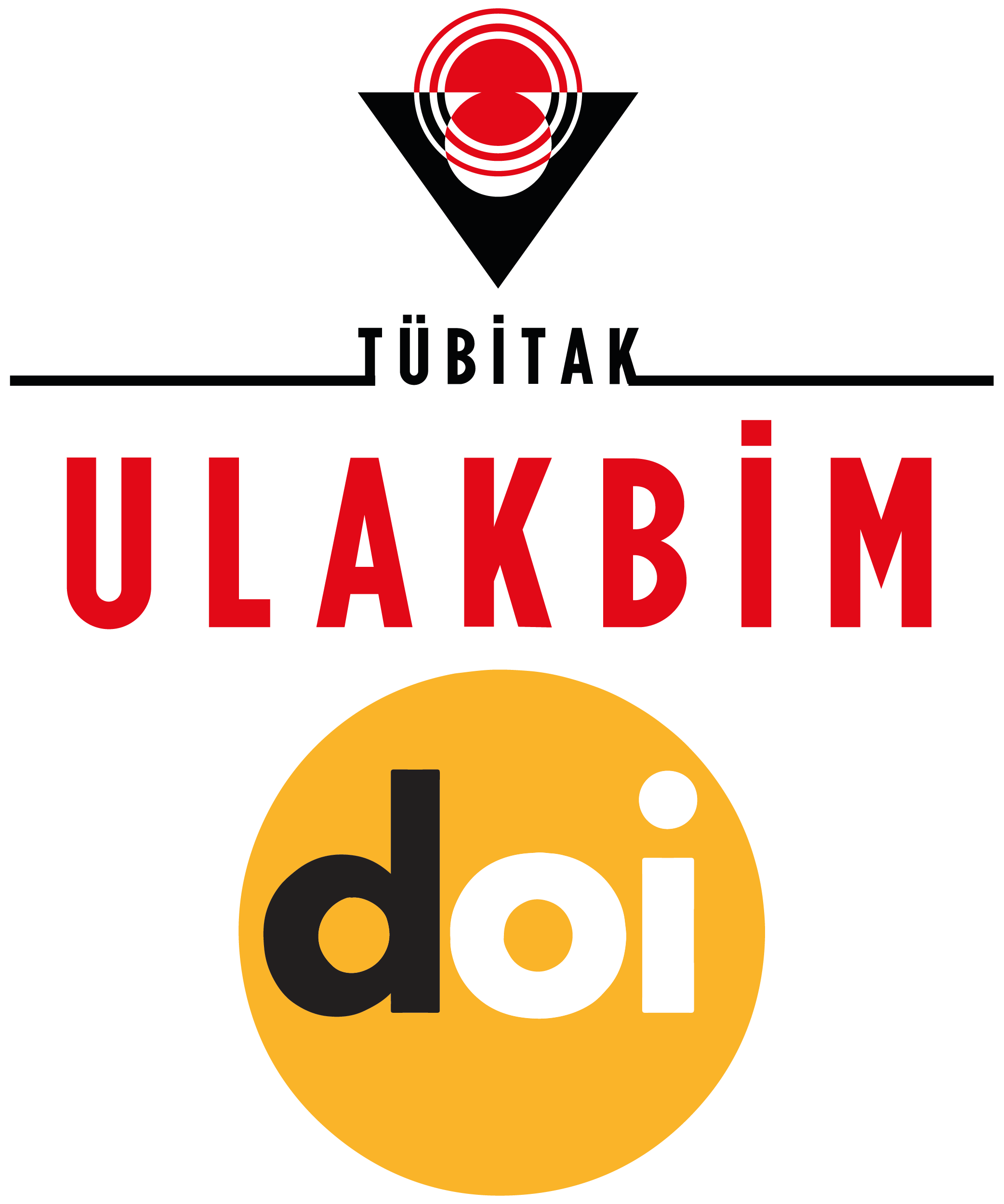Gastronomi Turizminin Geliştirilebilirliğine Yönelik Bir Araştırma: Edremit Körfezi Örneği (A Research Related to Improvableness of Gastronomy Tourism: An Example of Edremit Gulf)
DOI:
https://doi.org/10.21325/jotags.2020.713Keywords:
Gastronomy, Gastronomy tourism, Edremit bayAbstract
As the attraction factor of the tourism phenomenon, the historical values of the destinations, the ruins, the sea, the sun, and the beach are made up of material and intangible elements. With the effect of today's globalization phenomenon and technological developments, activities and local cultural elements come to the fore as remarkable attractions. As one of these elements, it can be stated that they are gastronomic items within the context of local cuisine cultures. In this context, the main motivation factor is defined as the gastronomic tourist of individuals who travel to visit food producers, food festivals, restaurants and private areas in order to taste a special type of food or to see the production of a food. In this context, the development of tourism for gastronomic purposes was determined by using existing gastronomic items as a destination with gastronomic potential in Edremit bay
References
Akdeniz, Y., Bakırman T., & Gümüşay, M.Ü. (2013). Edremit Körfezi Kıyı Bilgi Sistemi. TMMOB Coğrafi Bilgi Sistemleri Kongresi, 11-13 Kasım 2013, Ankara, Türkiye.
Akgöl, Y. (2012). Gastronomi Turizmi ve Türkiye’yi Ziyaret Eden Yabancı Turistlerin Gastronomi Deneyimlerinin Değerlendirilmesi (Yayımlanmamış Yüksek Lisans Tezi. Mersin Üniversitesi, Sosyal Bilimler Enstitüsü, Mersin, Türkiye.
Anna, D.J., Palladino, M., Garrido, R. G., Nadia, F., Carlo, C., Wilhelm, S., … Annelie, S.L. (2018). Gastronomy tourism: An ınterdisciplinary literature rewiev of research areas, disciplines and dynamics. Journal of Gastronomy and Tourism, 3(2), 131-146.
Arı, Y. & Hurley, P. (2010). Doğal zenginlikler ve şehirsel politik ekolojik dönüşümler: Edremit Körfezi örneği. Balıkesir. TUCAUM, VI. Ulusal Coğrafya Sempozyumu Bildiriler Kitabı (s. 345-353). Ankara, Türkiye.
Avcıkurt, C., Buzlukçu, C., Oflaz, M., Sezen M., Köroğlu,, A. Sarıoğlan M., & Karaman S. (2018). İkinci konut sahipliğinde itme ve çekme faktörleri: Edremit Örneği. Balıkesir Üniversitesi Sosyal Bilimler Enstitüsü Dergisi, 21(40), 527-549.
Akkaya, A., & Özcan, C. (2019). Türkiye’de gastronomi turizminin ekonomik etkilerinin indeks değerlendirmesi. Journal of Social And Humanities Sciences Research, 6 (32), 251-267.
Aydoğdu A. Duman, S. (2017). Destinasyon çekicilik unsuru olarak gastronomi turizmi: Kastamonu Örneği. Turizm ve Araştırma Dergisi, 6 (1), 4-23.
Balıkesir İl Kültürve Turizm Müdürlüğü. (2020). https://balikesir.ktb.gov.tr/TR-65990/tanitim-brosurleri.html
Balıkesir Valiliği. (2020). http://www.balikesir.gov.tr/ilcelerimiz
Birdir, K., & Akgöl, Y. (2015). Gastronomi turizmi ve türkiye’yi ziyaret eden yabancı turistlerin gastronomi deneyimlerinin değerlendirilmesi. İşletme ve İktisat Çalışmaları Dergisi, 3(2), 57-68.
Çömert, M., & Sökmen, A. (2017). Türkiye’de gastronomi turizmi: Antalya’da konaklayan turistler üzerine bir araştırma. Seyahat ve Otel İşletmeciliği Dergisi, 14(3), 6-26.
Efe, R., Soykan, A., Cürebal, İ., & Sönmez, S. (2013). Dünya’da Türkiye’de Edremit Körfezi çevresinde zeytin ve zeytinyağı. Edremit Belediyesi.
Gökçe, E. (2018). Edremit Körfezi’nde küçük bir iskele: Kemer-Edremit (Burhaniye) İskelesi. Atatürk ve Türkiye Cumhuriyeti Tarihi Dergisi, 1(2), 33-66.
Gökdeniz, A., Erdem, B., & Çelik Uğuz, S. (2015). Gastronomi Turizmi: Ayvalık’ta yerli turistler üzerinde görgül bir araştırma. Journal of Tourism and Gastronomy Studies, 3(1),1 4-29.
Guzman, T. L., & Canizares, S. S. (2011). Gastronomy, tourism and destination differentiation: A case study in Spain. Review of Economics & Finance, 2 (1), 63-72.
Hedegaard, L. (2019). Gastronomy and science: Terminological conundrums. Internatinal Journal of Gastronomy and Food Science, 15(2), 22-25.
Kocadağlı, A.Y. (2009). Türkiye’de zeytincilik faaliyetlerinde Edremit Körfezi kıyılarının önemi. İstanbul Üniversitesi Edebiyat Fakültesi Cografya Bölümü Cografya Dergisi, 19(1), 28-58.
Kivela J,. & John, C. C. (2005). Gastronomy tourism. Journal of Culinary Science & Technology, 4(2-3), 39-55,
Kivela, J. & Crotts, J. C. (2006). Tourism and gastronomy: gastronomy´s ınfluence on how tourists experience a destination. Journal of Hospitality and Tourism Research, 30(3), 354- 377.
Lui, Z. (2019). Western cuisine culture in contemporary China: A case study on haute french cuisine in high-class hotels and restaurants in urban Tianjin. Senri Ethnological Studies, 100(1), 159-171.
McKercher, B., Okumus, F., & Okumus, B. (2008). Food tourism as a viable market segment: It's all how you cook the numbers! journal of travel & tourism marketing, 25(2), 137-148
Sánchez-Cañizares, S. M., & López-Guzmán, T. (2011). Gastronomy as a tourism resource: Profile of the culinary tourist. Current Issues in Tourism, 15(3), 229-245.
Sarıışık, M. & Özbay, G. (2015). Gastronomi turizmi üzerine bir literatür incelemesi. Anatolia: Turizm Araştırmaları Dergisi, 26(2), 264 – 278.
Sarioglan, M. & Sezen, T.S. (2017). Project based learning approach in fusion cuisine education: A modal proposal. New Trends and Issues Proceedings on Humanities and Social Sciences, 4(1), 574-578.
Sarıoğlan, M. (2015). Prospect for Turkish gastronomy tourism, Athens Journal of Tourism, 2(2), 117-126.
Sarıoğlan, M., & Bostan Sarıoğlan, A. (2012). Ege Denizi’ndeki Su Altı Fauna Çeşitliliğinin Ayvalık Yöresi mutfak kültürüne etkisi ve gastronomi turizmi. Sualtı Değerleri ve Turizm Sempozyumu (07-10. 06.2012).
Sezen, T. S. (2018). Gastronomi Müzeleri İçinde: A. Akbaba ve N. Çetinkaya (Ed.), Gastronomi ve Yiyecek Tarihi (s. 265-277). Ankara, Türkiye: Detay Yayıncılık.
Stone, M.J. (2019). typologies of gastronomic and culinary travellers. Saurabh Kumar Dixit (ed.), The Routledge Handbook of Gastronomic Tourism. Routlegde International Handbooks, New York, USA.
Şahin, G. G. Üner, E. H. (2016). Türkiye gastronomi turizmi potansiyelinin her şey dâhil satış sistemi içinde değerlendirilmesi. Journal of Tourism and Gastronomy Studies, 4(3), 76-100.
Şahin, G. G., & Ünver, E. H. (2015). Destinasyon pazarlama aracı olarak “Gastronomi Turizmi”: İstanbul’un Gastronomi Turizmi Potansiyeli Üzerine Bir Araştırma. Journal of Tourism and Gastronomy Studies, 3(2), 63-73.
Wong, B.K.M., & NeeNg, C.Y. (2019). Need Recognition and Motivation for Gastronomy Tourism. Saurabh Kumar Dixit (ed.), The Routledge Handbook of Gastronomic Tourism. Routlegde International Handbooks, New York, USA.
Yılmaz, G., & Akman, S. (2018). Sürdürülebilir gastronomi çerçevesinde Edremit Körfezi yöresel mutfakları. Journal of Tourism and Gastronomy Studies, 6(4), 852-872.
Yılmaz, G. (2018). İda Dağı (Kazdağları)nın sağlık turizmi çerçevesinde incelenmesi, International Anatolia Academic Online Journal, 4(2), 15-35.
Zengin, B., & Gürkan, A.S. (2019). Afyonkarahisar mutfağının gastronomi turizmi açısından değerlendirilmesi. Safran Kültür ve Turizm Araştırmaları Dergisi, 2(2), 225-240.
Downloads
Published
How to Cite
Issue
Section
License
Copyright (c) 2023 Journal of Tourism & Gastronomy Studies

This work is licensed under a Creative Commons Attribution-NonCommercial 4.0 International License.








